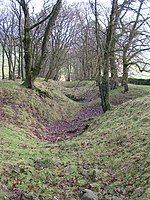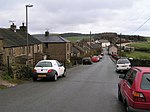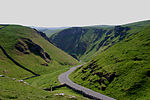Old Dam
Derbyshire geography stubsHamlets in DerbyshireHigh Peak, DerbyshireTowns and villages of the Peak District

Old Dam is a hamlet in Derbyshire, England. It is located 3 miles (4.8 km) south-west of Castleton on the edge of the village of Peak Forest.
Excerpt from the Wikipedia article Old Dam (License: CC BY-SA 3.0, Authors, Images).Old Dam
Old Dam, High Peak Peak Forest
Geographical coordinates (GPS) Address Nearby Places Show on map
Geographical coordinates (GPS)
| Latitude | Longitude |
|---|---|
| N 53.314 ° | E -1.829 ° |
Address
Old Dam
Old Dam
SK17 8EW High Peak, Peak Forest
England, United Kingdom
Open on Google Maps










